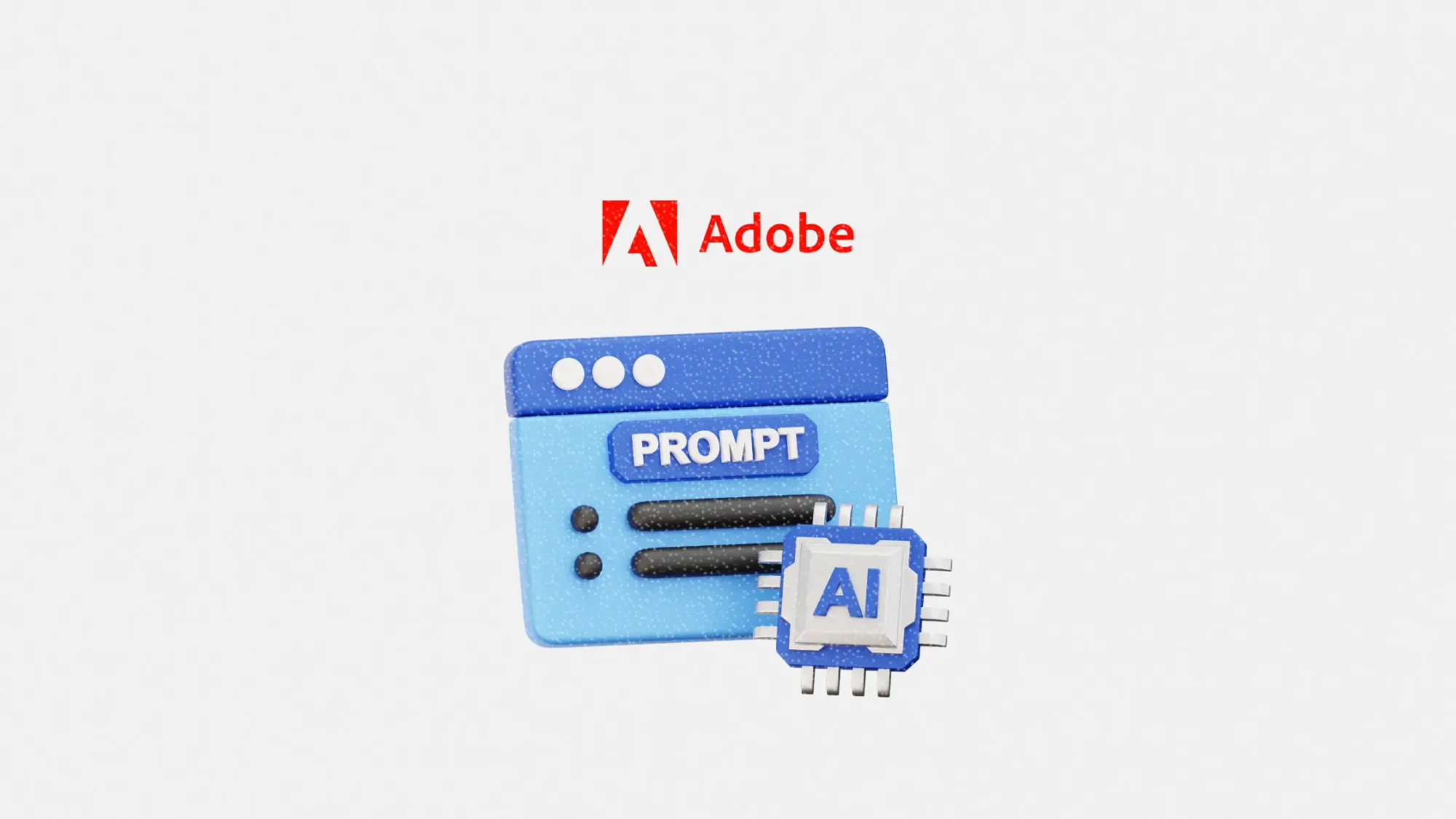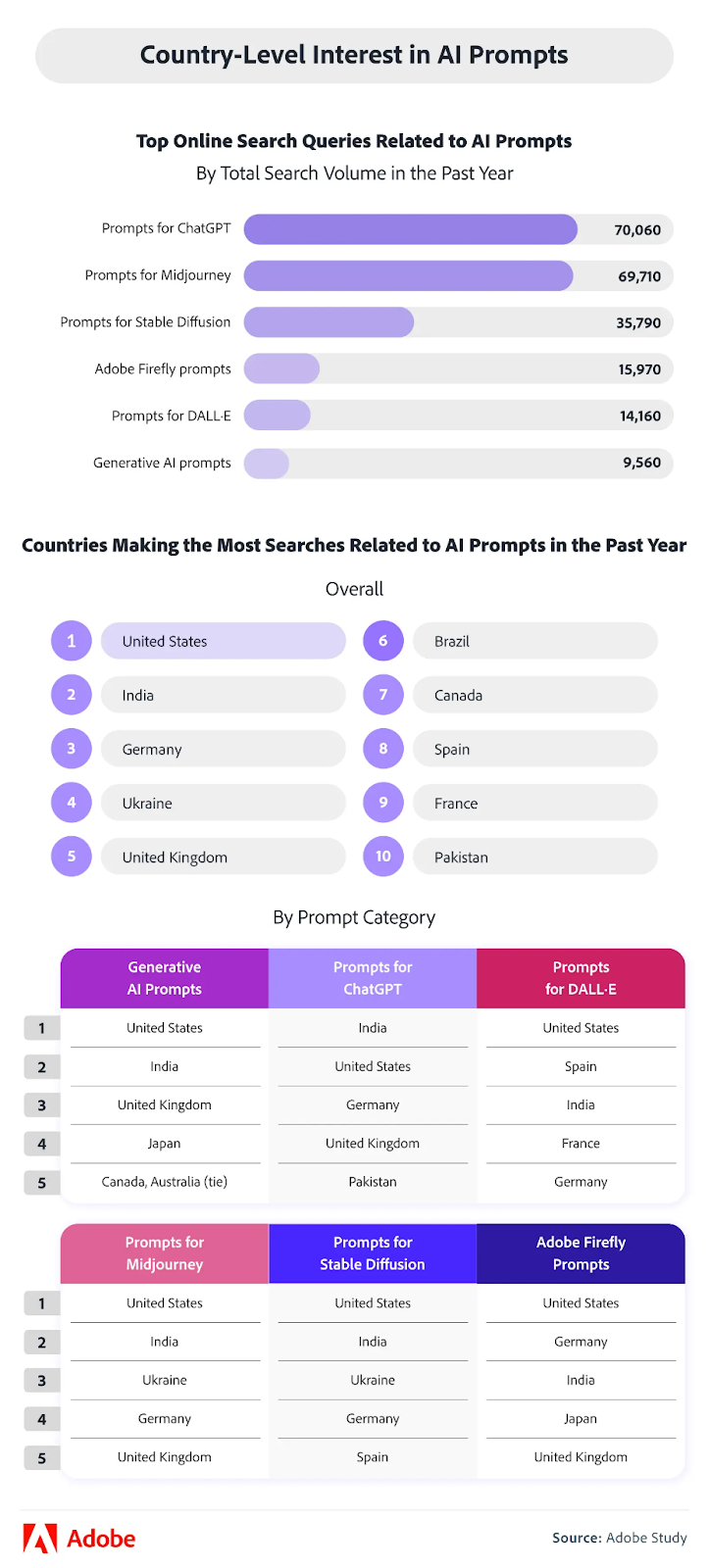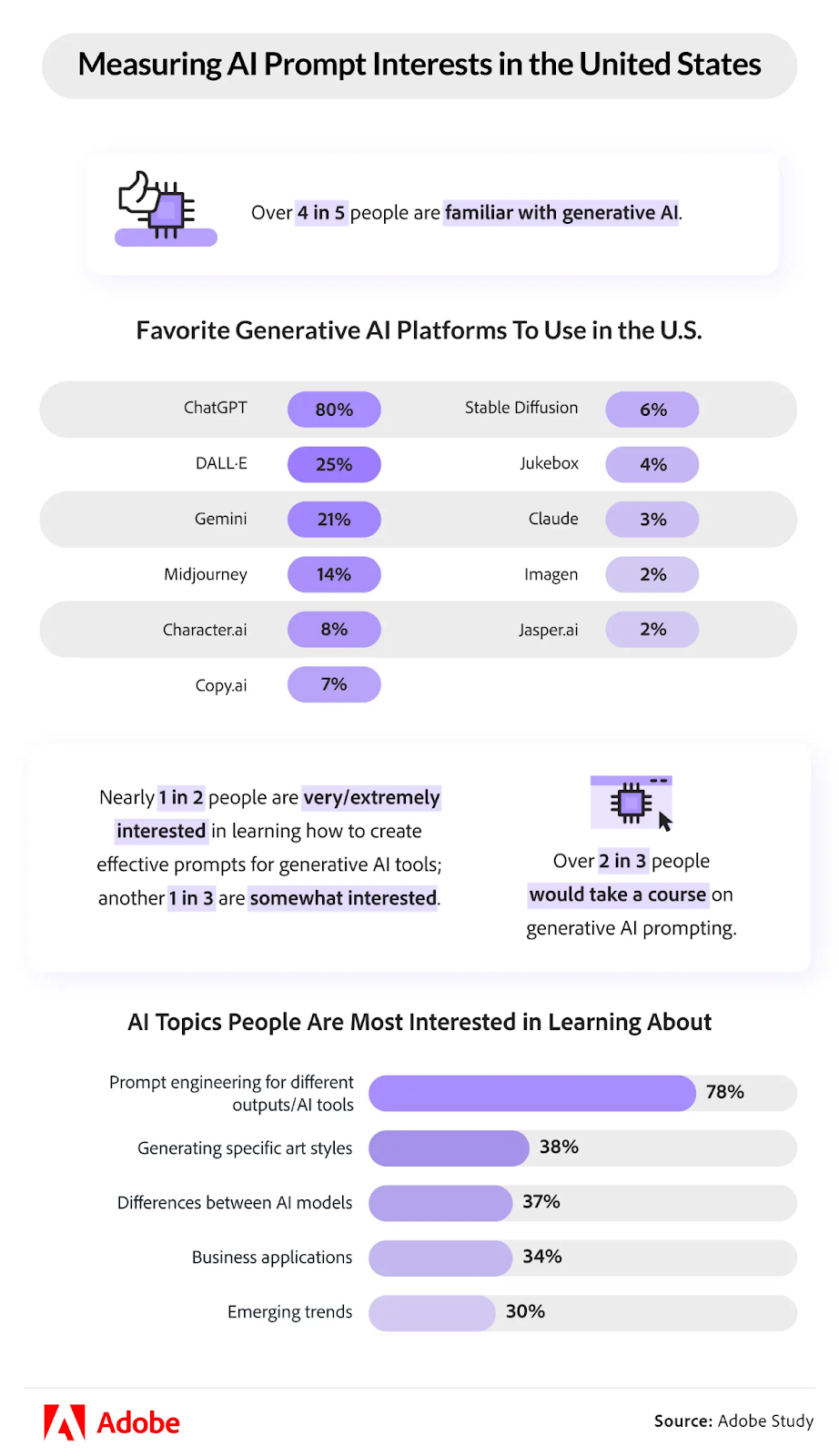Adobe Express survey reveals global generative AI search trends for mastering prompts
A global look at who’s searching for AI prompts, which tools are trending, and what it means for marketers

As generative AI tools go mainstream, a new Adobe Express study reveals which countries and tools are dominating the global conversation and how people are preparing to make better use of them.
From the U.S. to India and Germany, internet users are driving search volumes for prompts related to ChatGPT, Adobe Firefly, and Midjourney. And this isn’t just curiosity—there’s a growing appetite for learning how to craft better prompts that generate sharper, more useful AI outputs. For marketers, this shift signals a maturing landscape where prompt fluency could become a core creative skill.
This article explores which regions are fueling the global AI prompt surge, what tools are gaining traction, and how marketers can stay ahead by understanding user behaviors and education trends.
Short on time?
Here’s a table of contents for quick access:
- Who’s leading global AI prompt searches
- The tools dominating search volume
- How Americans want to learn about generative AI
- What marketers should know

Who's leading global AI prompt searches
Unsurprisingly, the U.S. led the pack in generative AI search trends between January 2023 and January 2024, followed closely by India and Germany. These three markets clocked the highest volumes of search interest for AI prompt queries, especially around tools like ChatGPT.
The term “prompts for ChatGPT” alone racked up over 70,000 searches globally, making it the most searched AI prompt-related phrase in the study. This reflects a clear demand for better guidance on how to unlock the full potential of AI tools through well-crafted inputs.
For marketers, this signals that the awareness phase is over. We are now in the optimization era of generative AI, where search behavior reflects a deeper desire to use these tools strategically.


The tools dominating search volume
ChatGPT is still the undisputed leader in the AI prompt space, but it is not alone. Midjourney—a generative image tool—was the second most searched platform in the U.S., followed by Adobe Firefly.
The strong global presence of Firefly in prompt searches stands out. Unlike Midjourney, which leans into artistic abstraction, Firefly is marketed more squarely toward design use cases like marketing collateral, branded imagery, and UI elements. Its appearance in the top five worldwide prompt-related queries suggests a rising interest in design-forward AI tools that can serve real creative workflows.
As more tools launch with their own prompt styles, formats, and quirks, understanding how to talk to each tool will become a competitive edge for marketers and creatives alike.

How Americans want to learn about generative AI
The study didn’t stop at search trends—it also surveyed 1,000 U.S. adults about how they want to learn generative AI. Nearly 80% expressed interest in improving their prompting skills, and over two-thirds said they would take a course if available.
The most popular learning topic was prompt engineering for different outputs and tools (78%), followed by how to generate specific art styles (38%), and understanding the differences between AI models (37%).
In terms of formats, pre-recorded video lessons led the pack (53%), while interactive workshops (19%) and live online classes (17%) followed. This suggests marketers looking to build internal training or upskilling programs should focus on asynchronous content first.
Generationally, Gen Z reported the highest familiarity with generative AI tools, especially Character.ai and Copy.ai. Millennials, meanwhile, showed the most hunger to upskill. That split reflects two key motivators: curiosity-driven experimentation versus career-focused optimization.

What marketers should know
Here’s how to turn these findings into actionable strategies:
1. Prioritize prompt literacy in creative teams
Generative AI is only as good as the input it receives. As more tools become mainstream, marketers should treat prompt writing as a strategic skill—like copywriting or design direction. Consider internal documentation or training on prompt best practices.

2. Map tools to specific outcomes
ChatGPT is ideal for structured text and ideation, Firefly excels in visual design, and Midjourney plays well with abstract creativity. Understanding which tool does what will help teams streamline workflows and avoid redundancy.
3. Track search trends as a proxy for adoption
Rising search volume for prompts isn’t just data. It is insight into what your audience might already be experimenting with. If Firefly searches are growing, for instance, your brand’s design workflows may need to integrate more responsive AI tooling.
4. Meet learners where they are
If you're marketing an AI-powered tool or building courses, know that pre-recorded video is the most desired format. Keep content digestible, flexible, and tailored to real-world applications, especially for millennial learners.
The global rise in generative AI prompt searches signals a shift from experimentation to serious adoption. With countries like the U.S., India, and Germany leading the charge, and tools like ChatGPT, Midjourney, and Firefly dominating interest, we are entering a new era where prompt fluency becomes table stakes.
Marketers who invest in prompt skills, tailor tools to their teams, and track search behavior as part of audience intel will be better equipped to ride this wave rather than be swept up by it.







